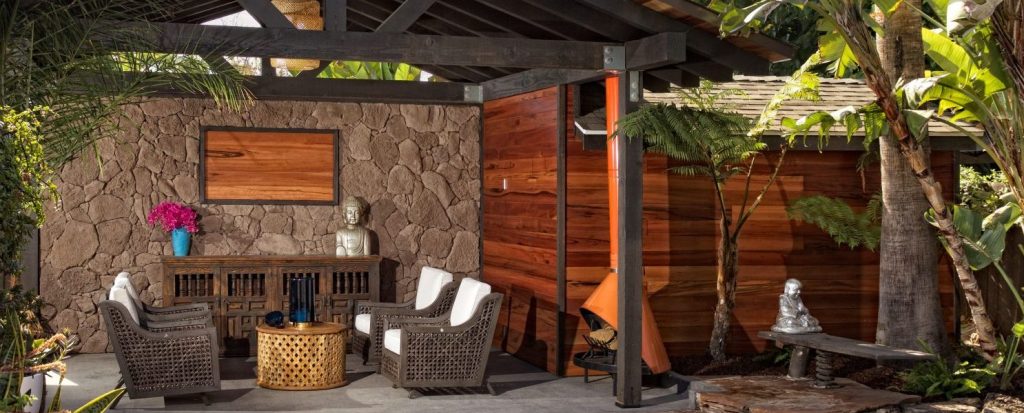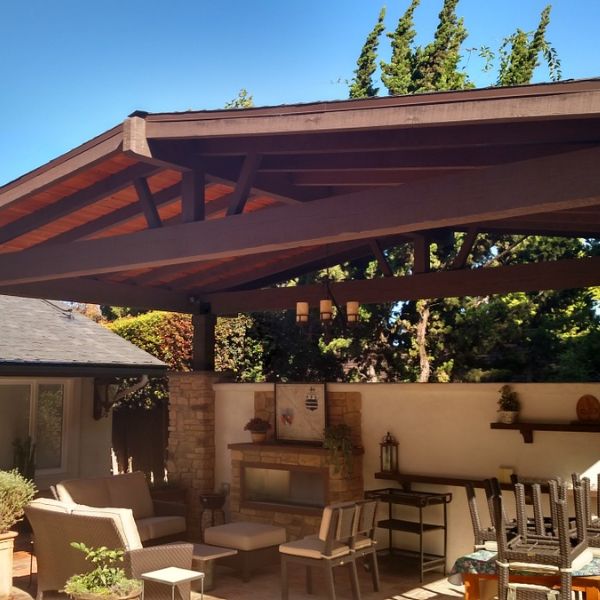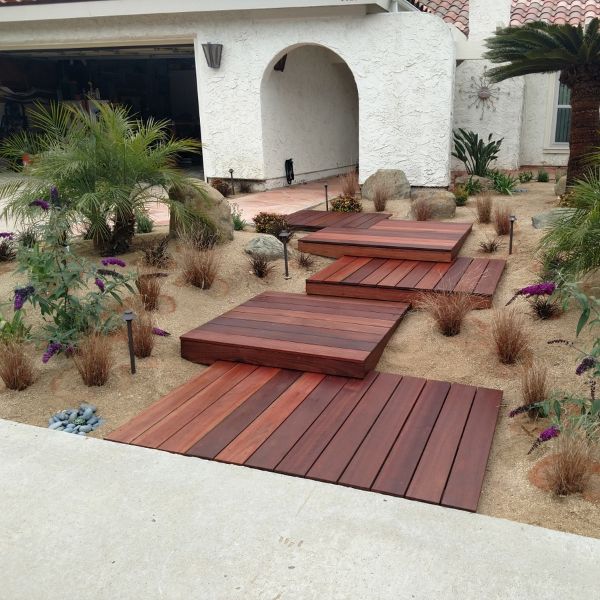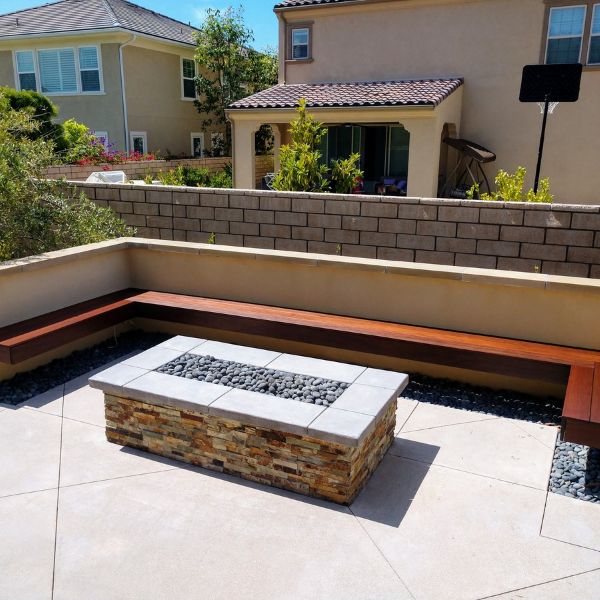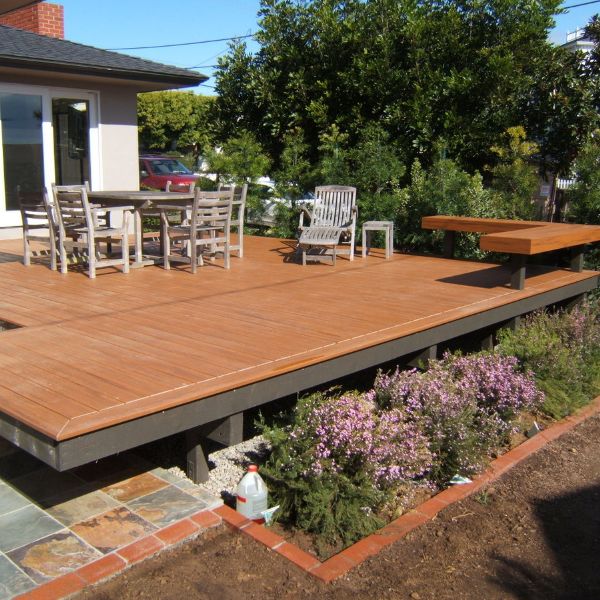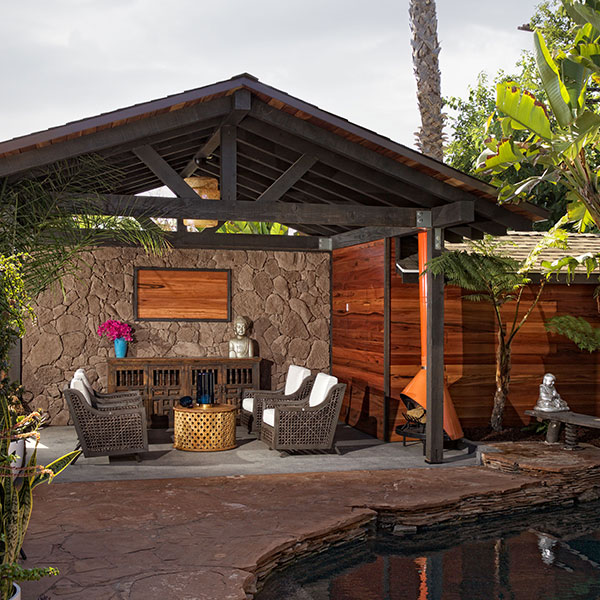Design Your Backyard for Beauty and Safety
Living in San Diego, California, means we’re no strangers to the risk of wildfires. As beautiful as our landscapes may be, they also present potential fire hazards. It’s essential to strike a balance between creating an aesthetically pleasing outdoor space and ensuring it’s fire-resistant. Proper landscaping techniques can make your property more resistant to wildfires while also enhancing its beauty.
At Wilson Woodscape, our landscaping contractor, Jeff Wilson, shares tips for designing and maintaining fire-resistant landscaping that’s both safe and visually appealing for your outdoor living space.
Understanding Fire Behavior and Risk Assessment
Before diving into fire-resistant landscaping, it’s crucial to understand how fires behave and assess the potential risks your property faces. Conduct a risk assessment to identify vulnerable spots around your property, considering factors like vegetation, topography, and prevailing winds. Fires can spread quickly, especially in areas with dry vegetation or flammable materials.
Understanding your property’s unique fire risk factors can help determine the optimal placement and selection of fire-resistant plants and hardscapes to make your landscape more resistant to wildfires.
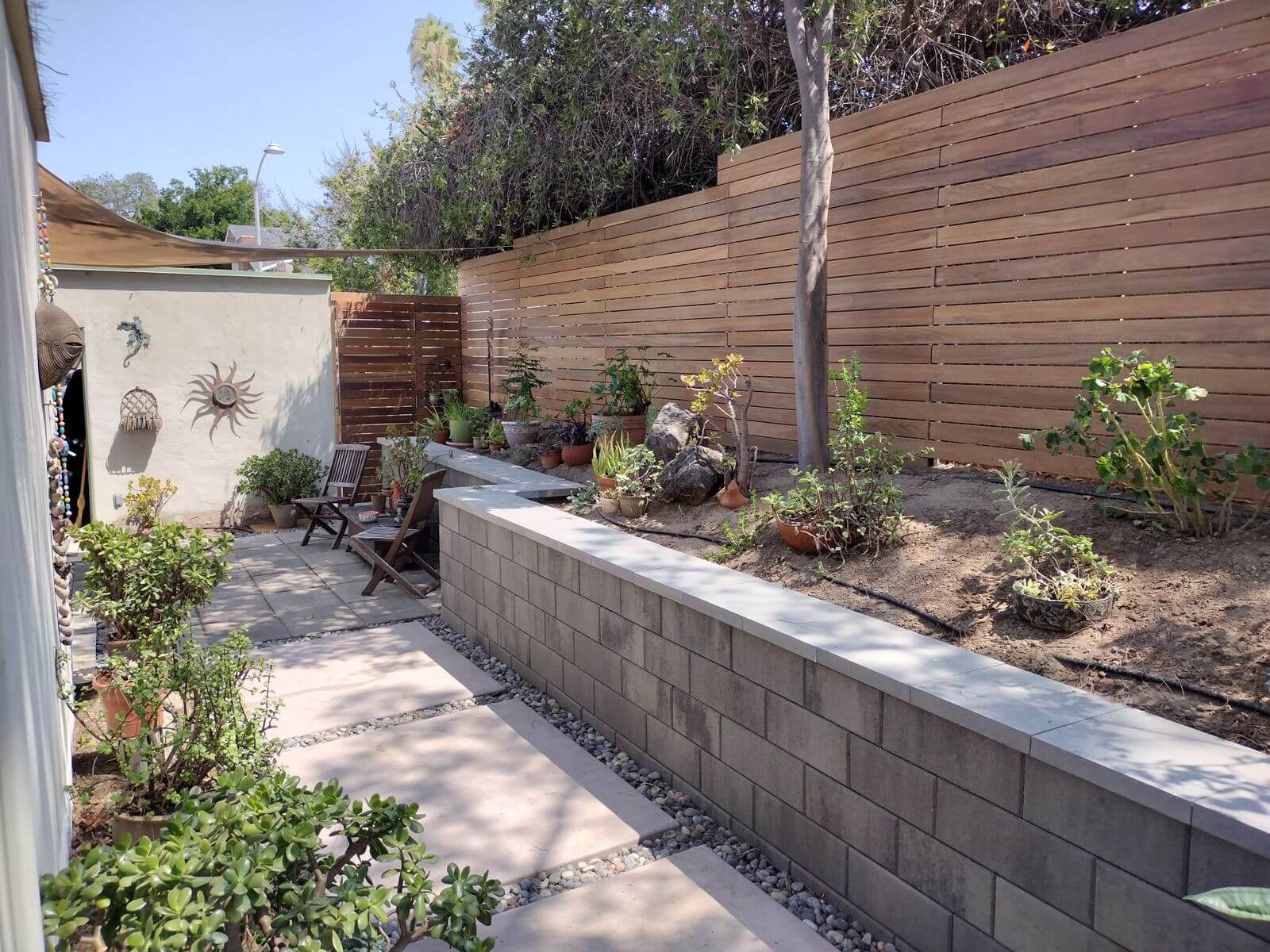
Selecting Fire-Resistant Plants
The choice of plants plays a significant role in fire-resistant landscaping:
- Opt for native, drought-tolerant plants with high moisture content and low sap or resin, as these are often excellent choices less likely to ignite.
- Succulents, certain ornamental grasses, and plants with thick, leathery, or moisture-rich leaves are good options.
- Avoid easily combustible mulch like bark or pine needles.
- Maintain plants through regular pruning and keep dead vegetation cleared to lower fuel loads.
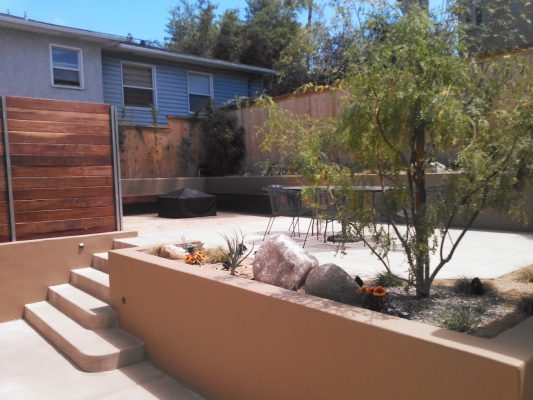
Creating Defensible Space
Designing defensible space around your home involves the strategic placement of hardscape features like patios, fences, and outdoor walls to create breaks that slow the spread of fire.
- To enhance fire resistance, zone vegetation by placing fire-resistant plants closest to the home.
- Removing ladder fuels, such as low-hanging branches or tall shrubs, will prevent vertical fire movement.
- Defensible space acts as a buffer zone, slowing down or redirecting flames.
- Within 30 feet of your home, ensure regular maintenance and clearing of flammable materials.
- Trim tree branches, remove dead vegetation, and keep the lawn well-watered and mowed to create a safer and more resilient outdoor environment.
Managing Vegetation and Fuel Sources
Regular maintenance of your landscape is essential to reduce potential fuel sources for wildfires. Avoid accumulation of dead leaves, needles, twigs, and other debris by regularly removing dry and dead vegetation.
You should also maintain proper spacing between plants and trees and encourage healthy growth, as dead plants and close proximity can allow fire to spread continuously. Fallen branches, dry leaves, and dead plants can become fuel for wildfires, so keeping the area clean and free of debris through regular maintenance helps minimize fire hazards.
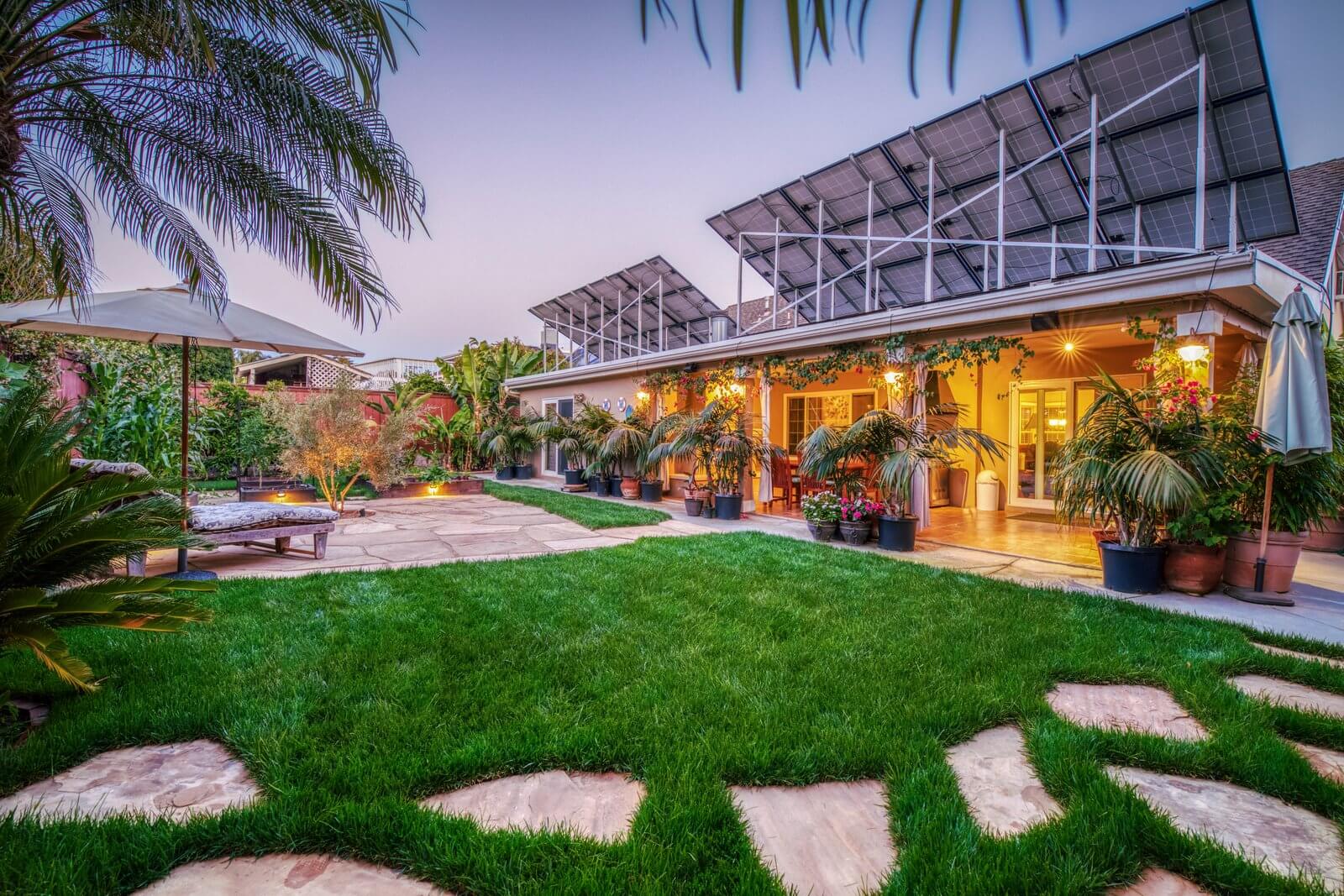
Irrigation and Water Management
Proper irrigation and water management are critical components of fire-resistant landscaping. A well-watered landscape is less likely to ignite during a fire and can act as a natural firebreak.
- Install an efficient irrigation system and inspect it annually.
- Consider water-efficient practices, such as drip irrigation, to ensure plants receive adequate water without wastage.
- Have multiple garden hoses long enough to reach all areas of your property.
- Prune plants away from water lines to avoid damage.
Firebreaks and Hardscape Design
Create firebreaks in your fire-resistant landscaping by using non-flammable materials like stone, gravel, or concrete for patios, paths, and walls. These hardscape features will separate potential fuel sources and reduce ember exposure.
By incorporating pathways, patios, and gravel areas made from fire-resistant materials like stone, concrete, and brick, you can create natural firebreaks within your landscape. These breaks in vegetation are designed to help stop or slow the spread of fire, enhancing the safety and resilience of your outdoor space.
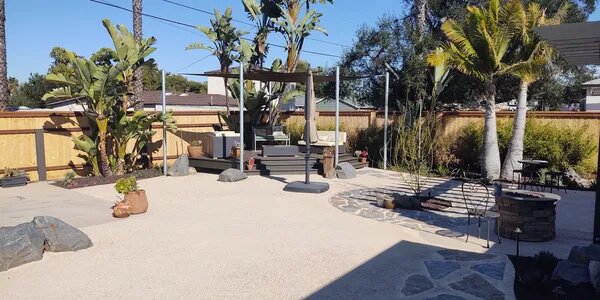
Firewise Landscaping Techniques
Firewise landscaping involves employing a combination of strategies to minimize the impact of wildfires on your property. This includes using fire-resistant plants, proper spacing, regular maintenance, and fire-resistant materials. A mix of small tactics like these helps make the landscape less vulnerable to ignition and fire spread.
- Rake and remove debris from gutters, decks, and roofs.
- Use non-flammable patio furniture and screens on roof vents.
- Avoid planting highly flammable plants close to structures.
- Store firewood away from structures.
- Keep lawns hydrated and mowed.
Get Started on Fire-Resistant Landscaping
Creating and maintaining fire-resistant landscaping takes strategic planning and diligent maintenance. The payoff is enjoying a beautiful, lush outdoor living space with added peace of mind knowing you’ve taken steps to protect your property.
Don’t leave the beauty and safety of your landscape to chance. Contact Wilson Woodscape today at (619) 838-1398 for a consultation! We’ll help you create a stunning yet fire-safe outdoor environment you can enjoy for years to come.

